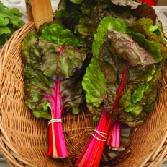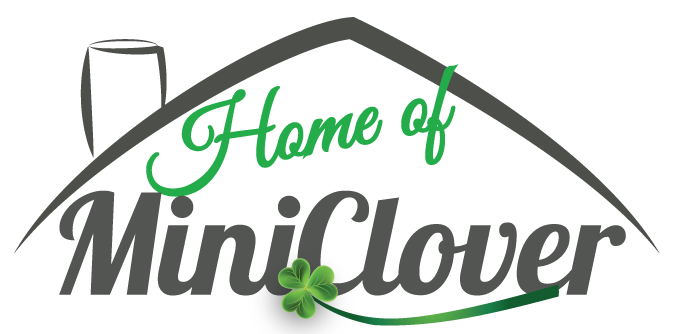-
CATEGORY ::
- All Seeds /
- All Flower Seeds

Hosta Seeds - American
SEASON
Perennial
USDA ZONES
3 - 8
HEIGHT
10 -18 inches
BLOOM SEASON
Summer
BLOOM COLOR
White
FOLIAGE COLOR
Mix
ENVIRONMENT
Partial shade to full shade
SOIL TYPE
Moist, well-drained, pH 6.1 - 7.3
DEER RESISTANT
No
HOUSE PLANT
Yes
LATIN NAME
Hosta american
SEASON
Perennial
USDA ZONES
5 - 10
HEIGHT
10 inches
BLOOM SEASON
Spring through winter
BLOOM COLOR
Mix
ENVIRONMENT
Partial shade
SOIL TYPE
Well-drained, pH 6.1 - 7.5
DEER RESISTANT
Yes
HOUSE PLANT
Yes
LATIN NAME
Sinningia speciosa
SEASON
Perennial
USDA ZONES
7 - 11
HEIGHT
28 inches
BLOOM SEASON
Spring to fall
BLOOM COLOR
Rosy purple
ENVIRONMENT
Full sun to partial shade
SOIL TYPE
Well drained soils, pH 6.6 to 7.5
DEER RESISTANT
Yes
SEASON
Perennial
USDA ZONES
7 - 11
HEIGHT
4 inches
WIDTH
12 - 18 inches
BLOOM SEASON
Early spring to early fall
BLOOM COLOR
Pink
ENVIRONMENT
Full sun to partial shade
FOOT TRAFFIC
Light
DEER RESISTANT
Yes
SEASON
Annual
USDA ZONES
3 - 11
HEIGHT
100 - 140 inches
BLOOM SEASON
Late spring to late summer
BLOOM COLOR
Mix
ENVIRONMENT
Full sun
SOIL TYPE
Well drained, pH 6.6 - 7.5
DEER RESISTANT
No
HOUSE PLANT
No
SEASON
Annual
USDA ZONES
4 - 9
HEIGHT
12 inches
BLOOM SEASON
Late summer to early fall
BLOOM COLOR
Mix
ENVIRONMENT
Full sun
SOIL TYPE
Moist, well-drained, pH 6.6 - 7.3
DEER RESISTANT
Yes
SEASON
Perennial
USDA ZONES
9 - 11
HEIGHT
120 inches
BLOOM SEASON
Mid summer to late fall
BLOOM COLOR
Orange, red, yellow
ENVIRONMENT
Full sun
SOIL TYPE
Sandy, well drained soil, pH 5.5 - 7.5
DEER RESISTANT
Yes
LATIN NAME
Mina lobata
SEASON
Annual
USDA ZONES
3 - 10
HEIGHT
12 inches
BLOOM SEASON
Mid summer
BLOOM COLOR
Pink
ENVIRONMENT
Full sun to partial shade
SOIL TYPE
Rich, moist soil, pH 6.6 - 7.5
DEER RESISTANT
Yes
HOUSE PLANT
Yes
LATIN NAME
Mimosa pudica
About...
Hosta (New American Hybrids) - You will be very happy that you grew Hosta plants from flower seeds! This mix makes a wonderful addition to the shady flower bed with their mix of foliage colors, including bi-colors, and textures. They are perfect for shady borders, around trees, and beds, and the varieties in this mix represent some of the newest and best in Hosta breeding today.
MORE FLOWER OPTIONS
Planting Directions
TEMPERATURE
60F
AVERAGE GERM TIME
28 - 35 days
LIGHT REQUIRED
Yes
DEPTH
Cover seed lightly with peat moss
SOWING RATE
3 - 4 seeds per plant
MOISTURE
Keep seed moist until germination
PLANT SPACING
30 inches
Hosta (New American Hybrids) - You will be very happy that you grew Hosta plants from flower seeds! This mix makes a wonderful addition to the shady flower bed with their mix of foliage colors, including bi-colors, and textures. They are perfect for shady borders, around trees, and beds, and the varieties in this mix represent some of the newest and best in Hosta breeding today. Hosta plants are a carefree choice for the shade garden, offering crisp, fresh bold color right up until frost.
Growing Hosta seeds is a simple procedure. Hosta seeds sprout nicely indoors, under normal house conditions, with temperatures running 60 - 70F. Use a "peaty" starter mix and just lightly cover the seed with peat moss. Keep the seed moist but not saturated until germination. Sow seeds 8 - 10 weeks before frost season ends. Hosta care includes keeping the plant moist throughout the hot months of the summer. As a rule, they need 1 inch of water every week.
Common Questions
What is eating my hosta plant?
There are many possibilities, but the most common are deer or slugs. Check for slugs at night. If it is eaten to the ground, it is probably deer.
When is the best time to divide my hosta?
They can be divided any time, except in hot dry weather. However, late summer or early fall is the best time to divide your hosta plants.
Can hostas be planted in the sun?
No, they perform best in the shade. Planting them in the sun will cause leaf burns.
Can I use hosta as cut flowers?
Yes, and the foliage also makes a nice addition to an arrangement offering different shades of green and texture to the arrangement.
Can I grow hosta in a container?
Yes, hostas are great for containers. Use a commercial planting mix rather than garden soil and be sure they have sufficient moisture.
How can I use hostas in the landscape?
Most commonly found in shade gardens, hostas enhance dim spaces with their decorative leaves. These plants thrive when planted in clusters or large groupings, serving well as background elements or standalone features in shady borders or woodland settings. Hostas can also be attractive potted plants and are occasionally kept indoors as houseplants, but they demand specific attention to flourish.
Planting Directions
TEMPERATURE
70 - 75F
AVERAGE GERM TIME
21 - 28 days
LIGHT REQUIRED
Yes
DEPTH
Do not cover the seed but press into the soil
SOWING RATE
4 seeds per plant
MOISTURE
Keep seed moist until germination
PLANT SPACING
10 inches
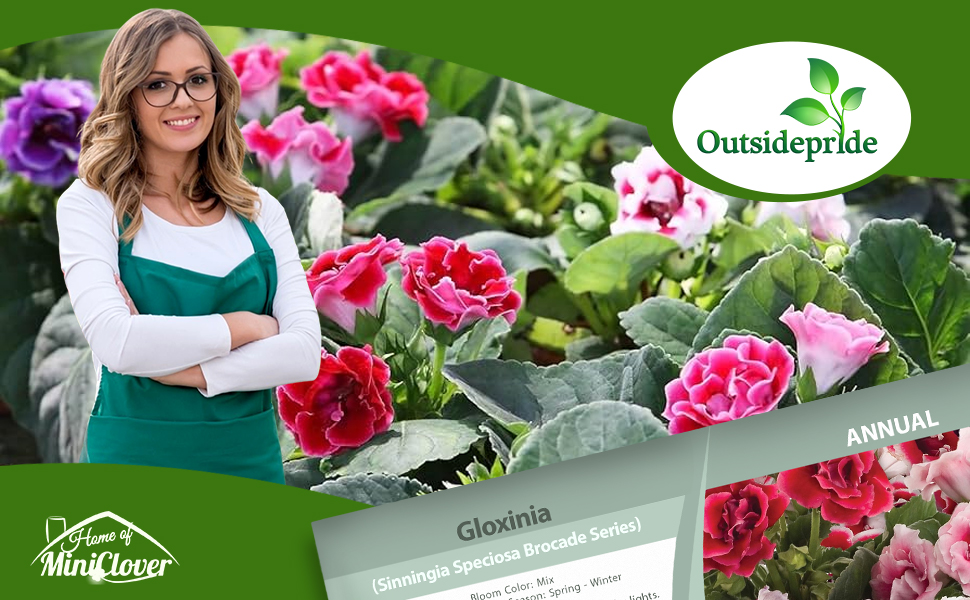
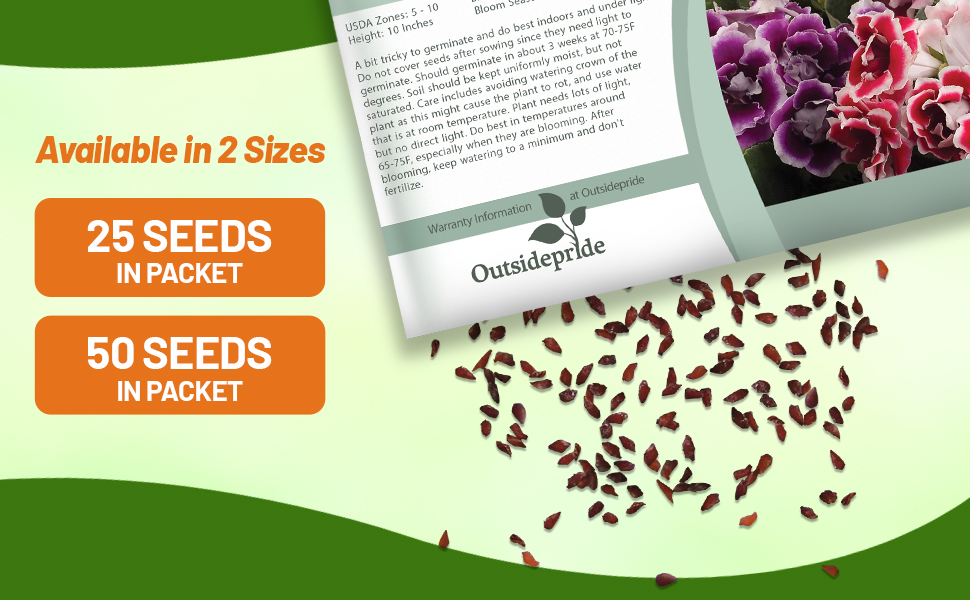
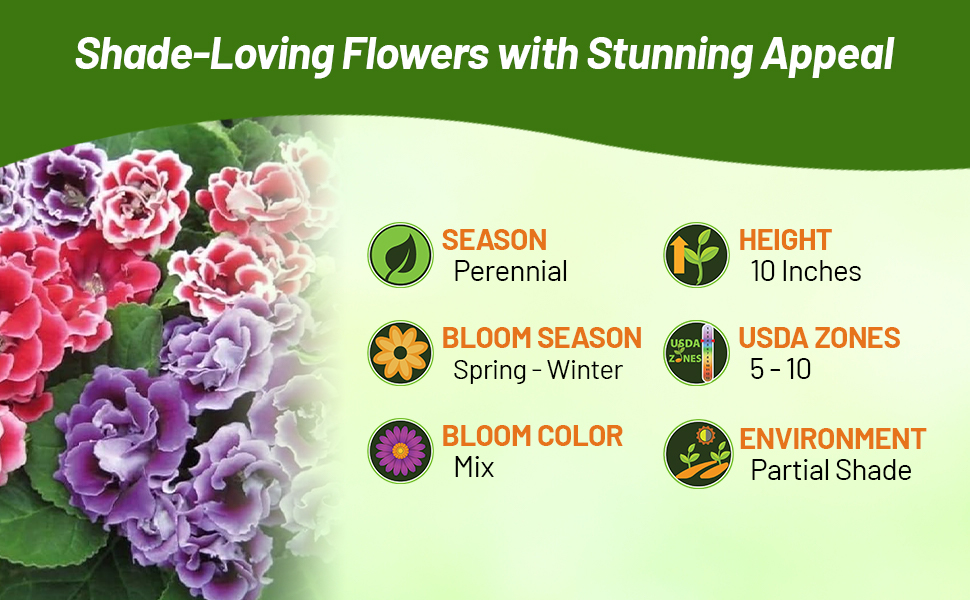
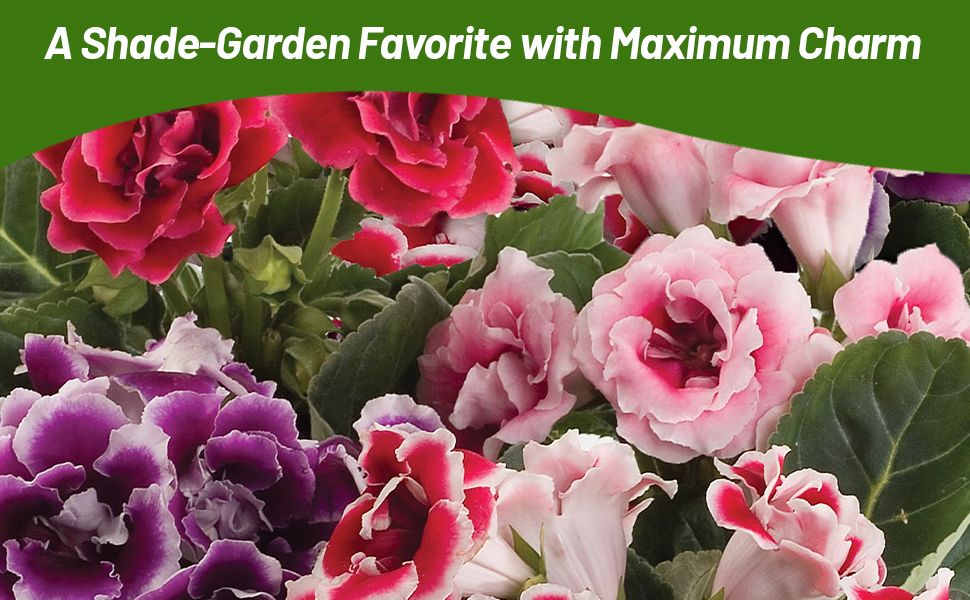
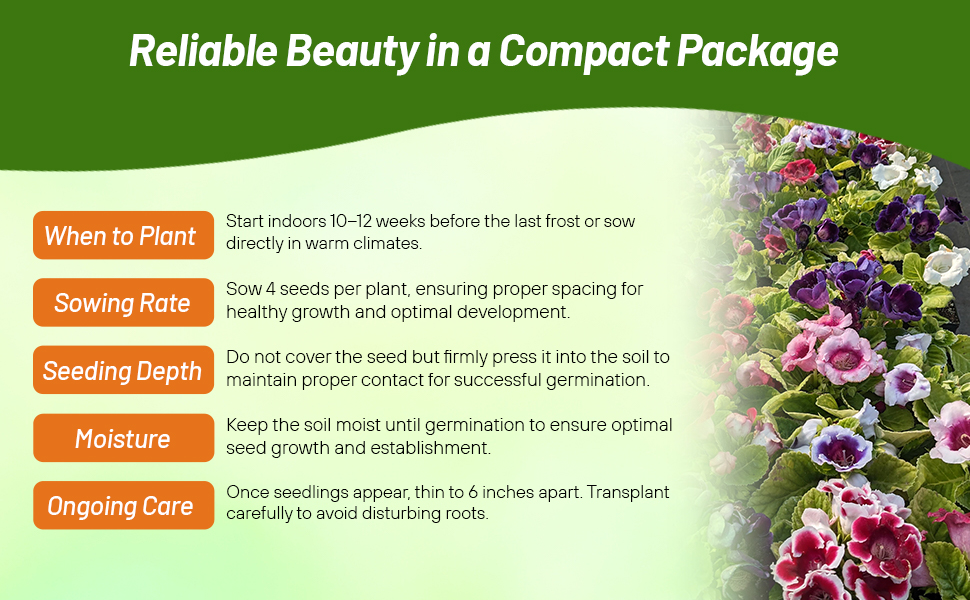
Gloxinia (Sinningia Speciosa Brocade Series) - Sow Gloxinia seeds to produce a beautiful mixture of red, blue, and white blooms. These compact Gloxinia plants blossom four to six months after sowing. They will flower for about 2 months, go dormant for about 2 months, and then begin growing again and start flowering. Gloxinias make a great house plant, giving wonderful, colorful blooms! Sinningia Speciosa is often referred to as Florist's Gloxinia or Brazilian Gloxinia.
Gloxina seeds are a bit tricky to germinate and do best indoors and under lights. Do not cover the flower seeds after sowing since they need light to germinate. Sinningia Speciosa seeds should germinate in about 3 weeks at 70 - 75F degrees. Soil should be kept uniformly moist, but do not keep it saturated. Florist's Gloxinia care includes avoiding watering the crown of the plant as this might cause the plant to rot, and use water that is at room temperature for watering. The Brazilian Gloxinia plant needs lots of light, but no direct light. Gloxinias do best in temperatures around 65 - 75F degrees, especially when they are blooming. After blooming, keep watering to a minimum and don't fertilize.
Common Questions
Do I need to prune my gloxinia?
To encourage a longer bloom season, you will need to deadhead your spent flowers. After the bloom period is over and your plant enters dormancy, prune back any dead or dying foliage.
My leaves are dropping, what do I do?
This can occur from sudden temperature changes such as drafts.
My leaves look scorched, why?
Direct sunlight can burn the leaves of your gloxinia, causing them to scorch and crisp.
My flowers are losing their vibrancy, what do I do?
This is typically caused by inadequate light move your plant to an area with more light but not direct sunlight.
Planting Directions
TEMPERATURE
73F
AVERAGE GERM TIME
14 - 21 days
LIGHT REQUIRED
Yes
DEPTH
Surface sow seed and press in to soil
SOWING RATE
7 - 8 seeds per plant
MOISTURE
Keep seeds moist until germination
PLANT SPACING
18 - 24 inches
Chinese Foxglove (Rehmannia Angulata Rosy Purple) - Rehmannia Angulata seeds can be grown as annuals in all climates and as perennials in USDA zones 7 - 11. Commonly referred to as Chinese Foxglove, this beauty does well in full sun or partial shade, and the Chinese Foxglove plants continuously produce large, foxglove-like flowers from late spring through fall. The flowers can measure 2 - 3 inches across and are rosy purple with spotted throats. Chinese Foxglove is great in the flower border, and the flowers are nice for cutting. A synonymous botanical name is Rehmannia elata.
How To Grow Chinese Foxglove From Seeds: Sow the Rehmannia Angulata seeds indoors in the late winter. In a starter tray using quality soil, press the flower seeds gently into the soil. Keep the Chinese Foxglove seeds consistently moist until germination occurs. Transplant the Chinese Foxglove seedlings into 3 inch pots and let them grow on indoors until all danger of frost has passed. Harden the Chinese Foxglove plants off for 10 days or more before planting outdoors. Provide winter mulch for extra protection in zones 7 and 8.
















